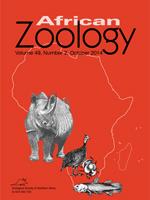Gulls are good biological models to investigate anthropogenic changes affecting the environment. We studied the breeding ecology of a monospecific colony of yellow-legged gulls, Larus michahellis on the Algerian island of Srigina, during three consecutive years (2009–2011) and attempted to identify factors influencing breeding parameters. Most nests (71%) were located in medium range of vegetation cover (20–80%). Egg-laying started in early March and extended to early May with egg-laying peaking at end of March. Mean clutch size varied significantly between years from 2.8 ± 0.4 (2009) to 2.4 ± 0.8 (2011) with clutches exhibiting a seasonal decrease in mean egg volume. Hatching success was relatively low compared with studies carried out in southern Europe and an average of 1.5 chicks survived to 20 days. Colony size decreased steadily during the study period, dropping by 28.4%. Such decline may be due to breeding dispersal by adults following poor breeding performances. Predation by feral cats (Felis silvestris catus), presumed to be the main cause of chick mortality, may be adversely impacting breeding success and could lead to the virtual extirpation of the yellow-legged gull and other breeding birds from the island.
BioOne.org will be down briefly for maintenance on 12 February 2025 between 18:00-21:00 Pacific Time US. We apologize for any inconvenience.
How to translate text using browser tools
1 October 2014
Phenology, Nest-Site Selection and Breeding Success of a North African Colony of the Yellow-Legged Gull, Larus michahellis
Afef Baaloudj,
Farrah Samraoui,
Ahmed H. Alfarhan,
Boudjéma Samraoui
ACCESS THE FULL ARTICLE

African Zoology
Vol. 49 • No. 2
October 2014
Vol. 49 • No. 2
October 2014
Laridae
NORTH AFRICA
predation
reproductive ecology
seabirds
yellow-legged gull




